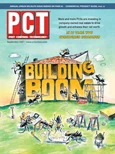Order/Family: Hymenoptera/Anthophoridae
Scientific Name: Xylocopa spp.
Description
Carpenter bees are large (1/2- to 1-inch long) insects that look like bumble bees. They differ by having a bare, shiny black abdomen compared to bumble bees, which have a hairy abdomen and some yellow markings. Male carpenter bees, identified by the bright yellow spot in the middle of the head, are aggressive but harmless (they lack stingers); females can sting if molested.
Biology
Adults overwinter in galleries, emerging in Spring to mate. A female prepares a nest by excavating a new site or cleaning out and expanding an existing tunnel. After the nest is ready, she places a mass of pollen mixed with nectar in the blind end of the tunnel, lays an egg on it and builds a partition of chewed wood pulp to form a brood cell. Six to eight brood cells are constructed in each tunnel. Bee larvae develop on the pollen and emerge as adults 30 to 40 days later, usually in late summer. There is one generation per year.
Habits
Carpenter bees actually bore holes into wood to create a tunnel in which to raise their young. Carpenter bees are not social insects, i.e., they do not live in nests or colonies like yellow jackets and honey bees. The entry hole is 3/8- to 1/2-inch in diameter and initially about 6 inches long; in subsequent years, however, this may be extended to more than 10 feet. The initial opening is straight into the wood, then the gallery typically makes an abrupt right angle and follows the grain of the wood and parallel to the outer surface. Entry holes are usually located in well-lit and sheltered areas, such as headers, roof eaves, porch ceilings, fascia boards, decks, doors, and window sills. Soft wood, such as California redwood, cedar, white pine, and poplar is preferred for nest building.
Control
Infested lumber can be removed and replaced with preservative treated wood. Painting or varnishing wood discourages the bees from boring into it. Untreated wood may be protected temporarily by applying a wettable powder or microencapsualted formulation. These products may have to be reapplied if they are exposed to heavy rain. Dust, wettable powder and aerosol formulations should be applied directly into the galleries. Tunnels should be left undisturbed for several days after treatment, then the holes sealed with wood doweling or putty.

Explore the September 2007 Issue
Check out more from this issue and find your next story to read.
Latest from Pest Control Technology
- Donny Oswalt Shares What Makes Termites a 'Tricky' Pest
- Study Finds Fecal Tests Can Reveal Active Termite Infestations
- Peachtree Pest Control Partners with Local Nonprofits to Fight Food Insecurity
- Allergy Technologies, PHA Expand ATAHC Complete Program to Protect 8,500 Homes
- Housecall Pro Hosts '25 Winter Summit Featuring Mike Rowe
- Advanced Education
- Spotted Lanternflies, BMSBs Most Problematic Invasive Pests, Poll Finds
- Ecolab Acquires Guardian Pest Solutions





